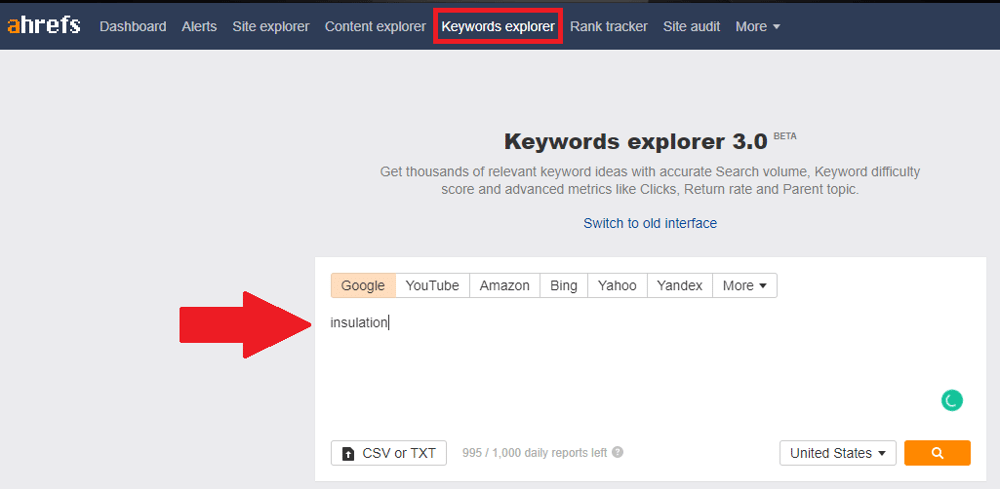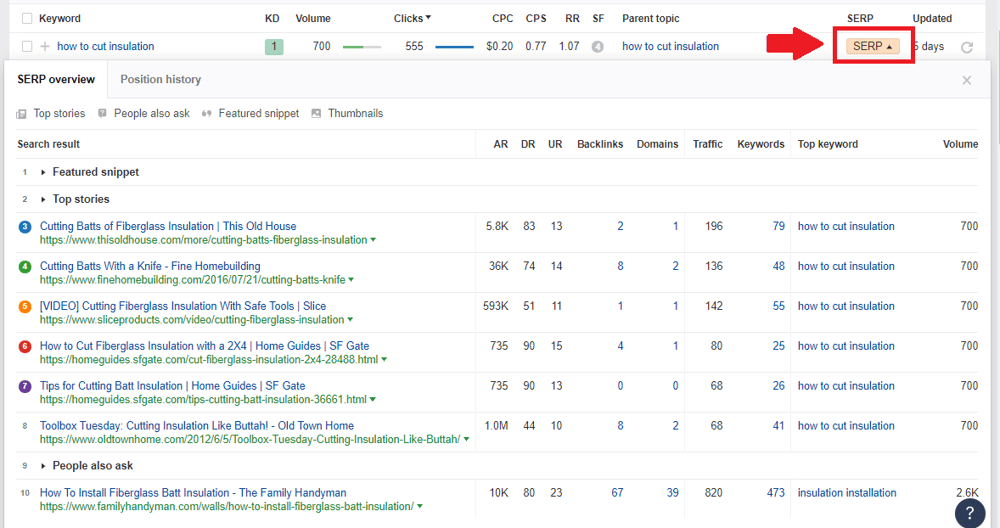
Authority content might be time-consuming to create, but it can explode your eCommerce site’s SEO traffic. How do you go about making this happen? In short, find a good keyword opportunity, create long-form content, and then build quality links to it — all of which are explained in detail below.
Some might think that long-form content is not the best way to provide information to your audience due to the short attention span of people nowadays. This simply isn’t true, as there are a lot of people still craving meatier content. A lot of content marketers might be tempted to churn out more short-form content because of articles saying that people nowadays have a shorter attention span than a goldfish.
According to a study from the Pew Research Center, the U.S. audience actually tends to engage more with long-form articles using their smartphones. Long-form content articles have twice the amount of engagement time compared to their short-form counterparts although each have more or less the same number of visitors. So, knowing this, take your mobile visitors seriously when creating your store’s authority content.
Understanding eCommerce Authority Content
What is Authority Content?
Authority content is usually long-form in nature but is not necessarily designed for your eCommerce customers' eyes. Think of it as being more of a resource than a blog article. Typically authority content either solves the intent of a searcher's query more quickly and more comprehensively than anyone else, or the piece is strictly designed to build links from non-competitive websites in similar industries. It is much harder (but not impossible) to create authority content with both of these elements present. That's why it is recommended to pick one, usually not both.
Long-Form Content for your Online Shop
What is long-form content? Many websites have a different word count to define long-form content. Some suggest a 2,000 or more word count, while others might suggest 4,000 or more. According to the definition of the Pew Research Center, a word count of 1,000 or more is considered to be a long-form content article.
According to Buzzsumo, reputable websites that continue to create original and authoritative content can gain links, engagement, and shares, years after the article was published. One example of a long-form content that continues to get more backlinks and traffic is "Beginner's Guide to SEO" written by Moz in 2013.
Also, long-form content has several benefits to offer your website, such as boosting your search engine optimization capabilities making it easier for your content and website to rank higher, it increases engagement more according to a Pew Study, longer content is shared more often, increases link building opportunities, increases traffic to your website or web design client(s), and also builds your credibility and authority in the field.
Keyword Research
Step 1: Finding the best keyword opportunity to go after
You might be wondering, how do I create authority content? The first thing you need to do is to find the best keyword opportunity with a combination of high search volume with low keyword difficulty. There are several ways to do your keyword research; in this article I will be detailing a paid method and a free method. The first method that I will be discussing will be the paid method, which uses the popular SEO tool Ahrefs.

In Ahrefs, go to the "Keyword Explorer" and type in the keyword that is relevant to your niche or market. For this example, we will be using the keyword "insulation".
Go to "All keyword ideas". It will show you similar keywords to your chosen keyword. After, press the "KD" button and type "0 to 3" since you are looking for the lowest keyword difficulty possible.

The lower the KD (Keyword Difficulty), the fewer inbound links you need to build for each piece to rank in the top ten. Sort the results by "Clicks" and not the "Volume" since clicks refer to the average monthly number of clicks on the search results that people make while searching for the target keyword. Scroll to the results to search for a keyword that you can create a piece of authority content around.
 Once you found a keyword, for example "how to insulate an attic roof rafters", you can start building around the keyword in creating your authority content. When you are in a situation like this, you might have a keyword that’s in the form of a question. You can make the question the title of the content that you will be writing. Another great thing about Ahrefs is the 'Questions' tool, which allows the user to see all the questions that are associated with the chosen keyword. It can help you find interesting topics that you can build around.
Once you found a keyword, for example "how to insulate an attic roof rafters", you can start building around the keyword in creating your authority content. When you are in a situation like this, you might have a keyword that’s in the form of a question. You can make the question the title of the content that you will be writing. Another great thing about Ahrefs is the 'Questions' tool, which allows the user to see all the questions that are associated with the chosen keyword. It can help you find interesting topics that you can build around.

You can use Ubersuggest if you are looking for a free tool. In this next screenshot example, we will continue to use the same keyword which is "insulation". The "SEO Difficulty in Ubersuggest" is similar to Ahrefs' "Keyword Difficulty". Go to the "Keyword Ideas" and filter using the SEO Difficulty like the one in Ahrefs. Search for an interesting keyword with high search volume and low SEO Difficulty.

Make sure to check both Ahrefs and Ubersuggest to double-check your ideas. If you use two or more tools to check your keyword ideas, the fewer the risks of a weird outlier situation with a keyword. Make sure to evaluate the search intent and double-check if Google is already serving up similar results to what you can create. To do this in Ahrefs, click the "SERP" button. It will show you the top ten results in Google.

For Ubersuggest, press the arrow key beside the keyword. The SERP will display on the right side of the screen. The drawback in the Ubersuggest is you cannot see the title tag, thus it will take longer to check each one.

Or, just do a Google search and evaluate page 1.
Step 2: Topic Creation
Once you've chosen your particular keyword, it’s now time to brainstorm and create the topic. Tip: keep the topic simple.
Make sure to keep the search keyword in the beginning if possible, because Google puts more value on the beginning than the end. When you are in doubt, do whatever is best for the users.
Lastly, if you are using a question keyword, the question is the topic. For example, "How to Cut Insulation". That already is the title of your article. You do not need to overthink it.
Step 3: Getting the Content Planned, Created, and Published
Content Creation
When creating authority content, the general rule is to make the content ~2,000 words or more. The word count is not final since it can vary by industry and competition. For example, Neil Patel regularly creates articles that have more than 8,000 words for the SEO industry. Other industries might only need a 1,000 word piece, but it varies by search intent, competition, and keyword difficulty.
All that said, generally speaking, aim for about 2,000 words and adjust from there. You want to make sure that the article is well-written, and solves the searcher’s intent quickly, ideally in the first paragraph.
If you need to spend a bit more to have someone create well-written content, go for it. People will tend to leave your website if they find the article poorly written and if they feel that it won’t give them the information they clicked to get. Google will notice this after a while (after all, they created Google Analytics and have all your visitor data) and will not be inclined to show it to users if everyone is just going back to Google.
Lastly, not only is solving the searcher’s query great for the user experience, there is also the possibility that your article might get the snippet in Google search.
Step 4: Link Building
As discussed earlier, the number of links your authority content needs to rank depends on the keyword difficulty. If you need a guide, you can use Ahrefs KD guide to understand a rough idea of how many links from referring domains you’ll need. For low-competition keywords, you can think of KD as the number of referring domains that point to your piece. If the chosen keyword has less than three KD, you will need three links from different websites to link back to your article. A good rule of thumb for low competition keywords that have less than 20 KD is 1 KD = 1 referring domain to get into the top 10. After that it starts to get a little more exponential (i.e. a KD of 90 needs 800 referring domains pointing to it).
When doing link building, think of it as a transaction. You need to give the prospective website something in return. One of the easiest ways to link build is by doing a guest post for other websites. You need to search for prospects that are open for guest posting and those who need content and reach out to them… and then you’re in business.
The prospect will get free quality content, while you get a link and it is a win-win for both parties. If there are any other things you can offer your prospect to seal the deal, you can do so. You can also use any unfair advantages that you might have. For example, you have a large number of followers on your social media account; you can offer to share the article to your followers or do an email blast in exchange for the link. Try as well to ask your prospect what they are trying to achieve in their website or business. If nothing else works, you can use cash. Using cash to influence and close the deal is highly not recommended since it is considered a grey or black hat SEO technique, depending on who you ask. Buying links violates Google's Webmaster Guidelines. If Google catches you buying links, they can either penalize you or completely remove you in Google index, so just know that it’s a little risky.
Conclusion
Long-form authority content continues in being a popular piece for both writers and readers. It still might be surprising for marketers that readers continue to look for and read long-form content that is helpful and provides more information than short-form content. Creating your authority content might be daunting and time-consuming, but the benefits that the long-form content will bring to your website will all be worth it.





Leave a reply or comment below